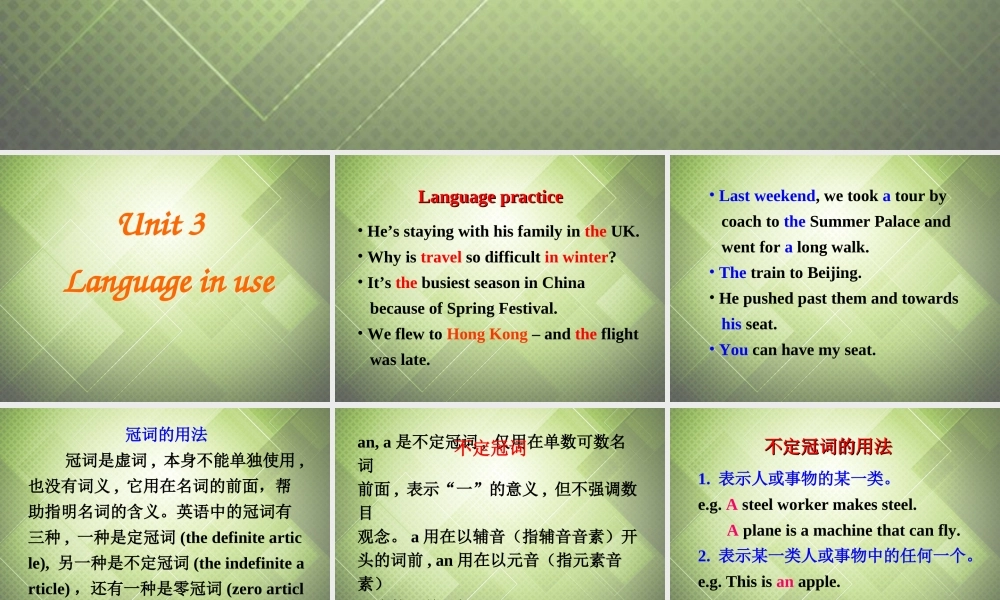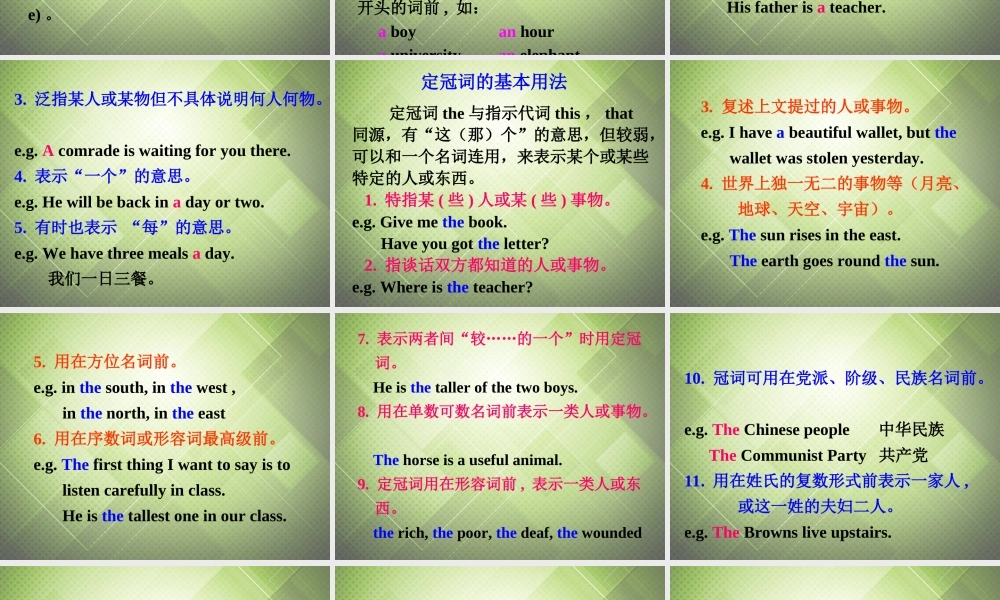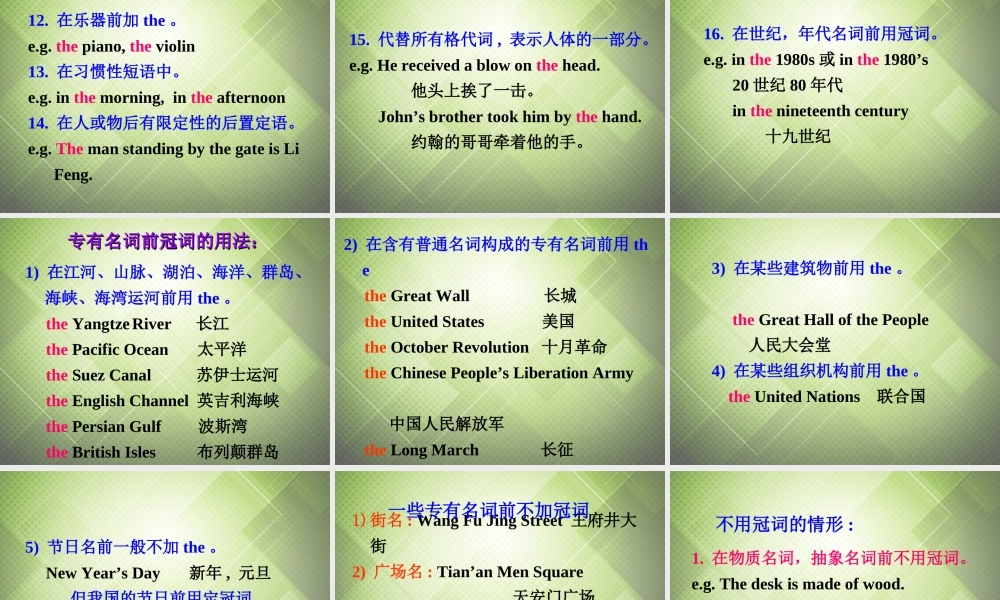外研小学起点 九年级( 下 ) Module 1Unit 3 Language in useUnit 3 Language in useLanguage practice Language practice • He’s staying with his family in the UK.• Why is travel so difficult in winter?• It’s the busiest season in China because of Spring Festival.• We flew to Hong Kong – and the flight was late.• Last weekend, we took a tour by coach to the Summer Palace and went for a long walk.• The train to Beijing.• He pushed past them and towards his seat.• You can have my seat.冠词的用法 冠词是虚词 , 本身不能单独使用 , 也没有词义 , 它用在名词的前面,帮助指明名词的含义。英语中的冠词有三种 , 一种是定冠词 (the definite article), 另一种是不定冠词 (the indefinite article) ,还有一种是零冠词 (zero article) 。an, a 是不定冠词 , 仅用在单数可数名词前面 , 表示“一”的意义 , 但不强调数目观念。 a 用在以辅音(指辅音音素)开头的词前 , an 用在以元音(指元素音素)开头的词前 , 如: a boy an hour a university an elephant 不定冠词1. 表示人或事物的某一类。 e.g. A steel worker makes steel. A plane is a machine that can fly.2. 表示某一类人或事物中的任何一个。e.g. This is an apple. His father is a teacher. 不定冠词的用法不定冠词的用法3. 泛指某人或某物但不具体说明何人何物。 e.g. A comrade is waiting for you there. 4. 表示“一个”的意思。 e.g. He will be back in a day or two. 5. 有时也表示 “每”的意思。e.g. We have three meals a day. 我们一日三餐。 定冠词 the 与指示代词 this , that同源,有“这(那)个”的意思,但较弱,可以和一个名词连用,来表示某个或某些特定的人或东西。 1. 特指某 ( 些 ) 人或某 ( 些 ) 事物。 e.g. Give me the book. Have you got the letter? 2. 指谈话双方都知道的人或事物。 e.g. Where is the teacher? 定冠词的基本用法3. 复述上文提过的人或事物。 e.g. I have a beautiful wallet, but the wallet was stolen yesterday. 4. 世界上独一无二的...




